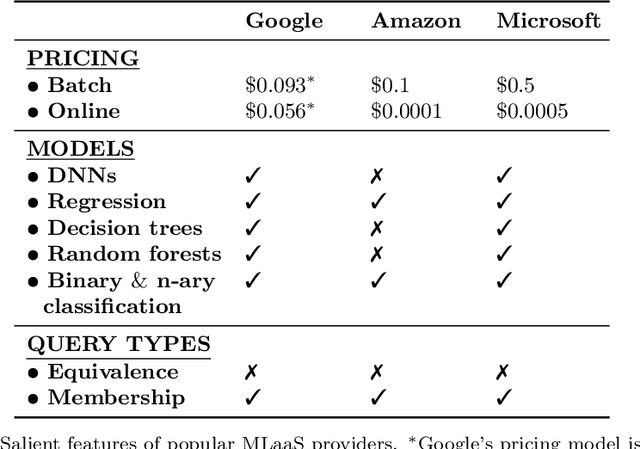Model Extraction and Active Learning
Paper and Code
Dec 04, 2018



Machine learning is being increasingly used by individuals, research institutions, and corporations. This has resulted in the surge of Machine Learning-as-a-Service (MLaaS) cloud services that provide (a) tools and resources to learn the model, and (b) a user-friendly query interface to access the model. However, such MLaaS systems raise privacy concerns, one being model extraction. In model extraction attacks, adversaries maliciously exploit the query interface to steal the model. More precisely, in a model extraction attack, a good approximation of a sensitive or proprietary model held by the server is extracted (i.e. learned) by a dishonest user who interacts with the server only via the query interface. This attack was recently introduced by Tram\`er et al. at the 2016 USENIX Security Symposium, where practical attacks for various models were shown. We believe that better understanding the efficacy of model extraction attacks is paramount to designing better privacy-preserving MLaaS systems. To that end, we take the first step by (a) formalizing model extraction and discussing possible defense strategies, and (b) drawing parallels between model extraction and the better investigated active learning framework. In particular, we show that recent advancements in the active learning domain can be used to implement both model extraction attacks, and to investigate possible defense strategies.
 Add to Chrome
Add to Chrome Add to Firefox
Add to Firefox Add to Edge
Add to Edge